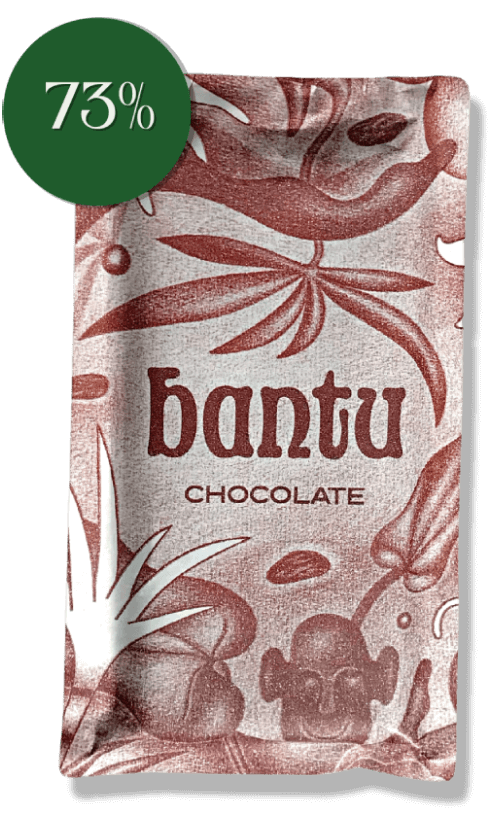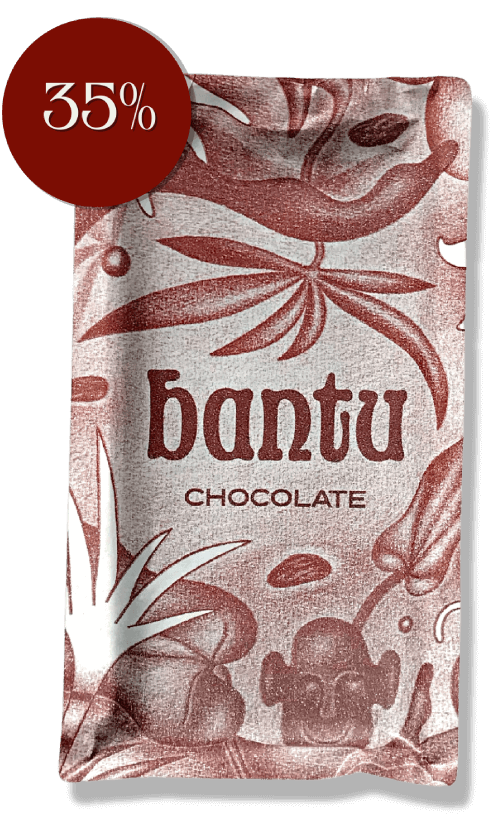
Fake Chocolate vs. Real Chocolate – How Much Do You Know?
September 19, 2024
Chocolate for Christmas: Guide on Shopping, Gifting, and Packaging
October 5, 2024Cocoa Percentage in Chocolate
How Much Do You Know?
What makes a chocolate healthy?
Simple, the ingredients used to make the chocolate, especially the amount of natural cocoa content, inclusions, and additives.
But how do you tell whether the chocolate you’re eating or about to buy is healthy?
That’s where cocoa percentage and ingredient list come in.
Quick reminder: cacao and cocoa are often used interchangeably, the difference being largely a matter of personal preference in terminology.
SEE ALSO: What’s the Difference Between Cocoa and Cacao?
Cocoa Percentage in Chocolate
Ready-to-eat chocolate bars come labelled in percentages alongside the type of chocolate. 35% white chocolate, 55% milk chocolate, 66% dark chocolate, 83% dark chocolate, etc.
The percentage tells you right away about the ratio by weight of cocoa versus other ingredients in the chocolate. But it can tell you more if you understand what the label means, especially how healthy or less healthy the chocolate is. And, understanding some terms in the ingredient list can help you select the right chocolate for you or for the person you want to gift with chocolate.
SEE ALSO: Real Chocolate vs. Fake Chocolate – How Much Do You Know?
Understanding Cocoa Percentage and Cocoa Solids in Chocolate
The percentage on a chocolate label specifies the share of total cocoa inside the chocolate by weight. Total cocoa refers to cocoa butter and non-fat cocoa solids found together in chocolate liquor (ground cocoa beans), but the liquor can be separated into individual cocoa butter and cocoa powder.
Let’s clarify with an example. 73% dark chocolate means 73% of the weight of the chocolate comes from products of the cocoa bean. In 100 grams of the chocolate bar, there are 73 grams of cocoa in the form of cocoa fat and non-fat cocoa and 27 grams of other ingredients, usually added sugar, but also nuts, spices, and other inclusions as the chocolate producer desires. In 50 grams of the chocolate, there are 36.5 grams of cocoa and 13.5 grams of other ingredients.
For milk chocolate, other ingredients must include dairy milk fats and milk solids. And for white chocolate, the percentage represents only cocoa butter because white chocolate does not have non-fat cocoa solids.
READ ALSO: The Complete Guide to Cocoa Solids from Bean to Bar
As the percentages in dark chocolate and milk chocolate only specify total cocoa, they do not tell you about the quantities of the individual cocoa solids. However, the law may demand minimum amounts of different cocoa solids that chocolate makers must respect for different types of chocolate labels.
Those minimum amounts vary between countries as shown on the table below.
| Region/country | Type of chocolate | Min % total cocoa | Min % cocoa fat | Min % non-fat cocoa | Min % milk fat | Min % total milk solids |
|
European Union & UK |
Dark chocolate | 35% | 18% | 14% | – | – |
| Milk Chocolate | 25%
(20% for Family Milk Chocolate) |
2.5% | 2.5-3.5% | 12-14%
(20% for Family Milk Chocolate) |
||
| White Chocolate
|
20% | 20% | – | 2.5-3.5% | 14% | |
|
United States |
Dark chocolate | 35% chocolate liquor | – | – | ||
| Milk Chocolate | 10% chocolate liquor | 3.39% | 12% | |||
| White Chocolate
|
20% | – | 3.5% | 14% | ||
|
Canada (Canada allows max 5% milk solids in dark chocolate, not included in this table) |
Dark chocolate | 35% | 18% | 14% | – | – |
| Milk Chocolate | 25% | 15% | 2.5% | 3.39% | 12% | |
| White Chocolate | 20% | – | 3.5% | 14% |
Sources: WHO standards for chocolate, Legal definitions for chocolate
Cocoa Percentage can Explain Differences in Taste and Flavour: Europe and UK vs. US Chocolates
In Europe, dark chocolate must have a minimum of 14% non-fat cocoa and minimum 18% cocoa butter while there’s no such requirement in the US. Knowing the legal requirements on minimum total cocoa and cocoa solids percentages may explain the belief that European dark chocolate has a more intense cocoa flavour than American chocolate.
The same thing may be said of milk chocolate where some consumers say European milk chocolate is creamier than US milk chocolate. When you look at milk requirements, you see that in Europe, it is minimum 12-14% milk solids and 12% in the US.
These figures can help explain the differences in quality, flavours, and price between chocolate from different regions, sometimes even from the same brand.
Common Cocoa Percentages in Different Types of Chocolates and Cocoa Powder
The percentage on a chocolate label is always stated alongside the type of chocolate. This says more about the proportion of cocoa, but also the required ingredients you’d expect to see on the ingredient list.
This is plain chocolate made with cocoa liquor, added cocoa butter, and usually sweetened with sugar, and does not have milk fat. The total cocoa content in dark chocolate can range from 35% to 100%, that is, moving from sweet, to semisweet, bittersweet to bitter as the percentage increases.
83% dark chocolate means 83% of the weight of the chocolate comes from products of the cocoa bean as cocoa fat and fat-free cocoa solids. That is, in 100 grams of the chocolate, 83 grams comes from cocoa butter and cocoa powder, the remaining 17 grams coming from added sugar and others, but not milk fats.
Although the law in many countries requires a higher minimum percentage of cocoa fat, it is usual for dark chocolate to have more cocoa powder than cocoa butter. Cocoa butter is quite expensive.
A 2021 report by America’s National Confectioner’s Association showed that the most popular dark chocolate percentages range from 71% to 75% followed by 66% to 70%. These popular dark chocolate percentages contain more cocoa with less added sugar and are therefore not as bitter as higher percentages. Lower percentages tend to be higher in sugar which some consumers find unhealthy and too sweet. That said, some consumers also love dark chocolate with cocoa percentages of even above 90%.
READ ALSO: The Bitter Side of Dark Chocolate – Why Some Love It & Some Don’t

Noire 73% is one of 3 dark chocolate bars we craft in London with cacao beans from our farm in Cameroon
Milk Chocolate
55% milk chocolate means 55% of the weight of the chocolate comes from the cocoa bean in the form of cocoa butter and cocoa powder found together as chocolate liquor. Specifically, in 100 grams of 55% milk chocolate, 55 grams come from cocoa, and 45 grams come from milk, sugar, and others. This is true, whether it is standard milk chocolate or a dairy-free alternative. The only difference is that dairy-free milk chocolate use plant-milks like coconut milk, almond milk, oat milk, etc.
Common milk chocolate percentages, including dairy-free versions, range from 40-65% total cocoa content.
White Chocolate
The cocoa percentage on a white chocolate label is just for cocoa fat with no fat-free cocoa solids, which makes it hard to find high-cocoa white chocolate. You’ll most likely find white bars ranging between 30-40% cocoa butter content.
35% white chocolate means 35% of the total weight of the chocolate is from cocoa fat. That is, in 100 grams of the white chocolate, there are 35 grams of cocoa fat, the remaining 65 grams shared by sugar, milk products, and others.
In the US, EU and the UK, white chocolate must contain at least 20% by weight of cocoa butter. Still in the US, white chocolate must contain at least 55% of sugar, which is why many consumers find white chocolate too sweet.
Cocoa (Cacao Powder)
Cocoa powder comes in various percentages. 50% cocoa powder means half of the product comes from defatted dry cocoa solids and the remaining half comes from other ingredients usually added sugar to reduce bitterness. 100% cocoa powder means the product is made from defatted dry cocoa solids only with no additives. Cocoa powder may have trace amounts of cocoa butter.
Cocoa powder can be natural or alkalized. Alkalized coco powder, even if it’s 100%, is not as beneficial as natural cocoa powder. This is because alkalization destroys the flavanols in cocoa.
Cocoa Percentage vis-a-vis Health Benefits and Nutrition
One benefit of knowing the cocoa percentage of a chocolate is that it helps you to know how nutritive or potentially healthy the chocolate is. The higher the percentage, the more the flavonoids and antioxidant properties, though flavonoid content varies widely among brands.
Generally, minimally processed natural 83% dark chocolate has more flavonoids than 73% than 66% than 55% etc. 100% dark chocolate is highest in flavonoids but is too bitter.
Something consumers may not always remember to find out is whether the cocoa in a chocolate is natural or it has been treated with alkali. Some chocolate makers can use alkali to make their cocoa less bitter. Such chocolate, even if it’s high in cocoa, is not rich in flavonoids. Flavonoids are what make dark chocolate and natural cocoa powder so potentially beneficial to human health.
READ ALSO: Flavonoid-Rich Foods and Health Benefits – From Cacao to Your Plate
Influence of Cocoa Percentage on Taste, Flavour, and Price
Cocoa percentage says something about a chocolate’s quality and flavour. The higher the cocoa percentage, the higher the quality and the more intense the cocoa flavour in the chocolate. And sometimes, the higher the price tag.
Cocoa solids give chocolate its taste and flavour while cocoa butter ensures the chocolate is smooth, snaps when you break it, and melts in your mouth. Chocolates that partially or fully replace cocoa butter with alternatives like wax, palm oil, palm kernel oil, etc. may feel waxy in the mouth or leave a non-chocolate aftertaste.
Low-cocoa chocolate is sweet as it contains more sugar and milk than cocoa while high-cocoa chocolate is bittersweet and bitter depending on percentage and amount of added sugar.
We have 5 different chocolate percentages with different flavour profiles.
READ ALSO: Beyond Fairtrade – How Our Tree-to-Bar Model Benefits the Environment, Farm Workers, and Consumers
How to Choose the Right Cocoa Percentage
The right cocoa percentage in chocolate is an individual thing because one person may enjoy a 95% dark bar and another finds 70% ‘horrible’. The type of chocolate and brand also influences taste preferences.
Dark chocolate, with less sugar and no milk, usually has a more direct cocoa flavour. For health benefits, aim for a cocoa percentage of at least 70%. If your taste buds are not already used to dark chocolate taste, start with a lower cocoa percentage. You can find bars between 40-60%, then gradually work up to high cocoa percentage of 70-100%.
Experiment with different percentages and different brands to find your sweet spot that balances pleasure eating with health benefits.
Milk chocolate is a favourite with most people and taste seems more important than cocoa percentage.
For white chocolate, the right percentage may come down to a matter of affordability as there are no wide variations in cocoa content like you find with dark chocolate and milk chocolate. Most white chocolate have cocoa butter percentages between 30-36%, but you can find some as high as 40%. Remember that white chocolate has only about 5% of cocoa flavanols that offer most of dark chocolate’s health benefits.
When buying cocoa (cacao powder), check whether it’s natural or alkalized. Alkalized cocoa powder, even if it’s 100%, has had most of its flavanols destroyed.
Main Takeaway
The cocoa content on a chocolate label or cocoa powder label tells you the amount of total cocoa solids by weight in the chocolate. It can also be an indication of flavour, chocolate quality, and potential health benefits.
Check Out Our Cocoa-Rich Chocolates
Answers to Common Questions
What percentage of cocoa is healthy?
At least 70% total natural cocoa solids, because it provides more antioxidants and less added sugar. The higher the cocoa content, the more the antioxidants, but you may not find higher cocoa’s intense flavour pleasant to eat unless you train your palate to enjoy higher cocoa percentage.
Is 100 percent cocoa bad for you?
No. Natural 100% cocoa is healthiest as it has not been diluted by other ingredients, but most people find its bitter taste unpleasant. You can enhance the taste by adding a sweetener or pairing the chocolate or cocoa with sweet and tart fruits and beverages. Another way is to start with low-cocoa percentage and gradually increase to adjust to the taste.
What is considered high cocoa percentage?
There’s no strict threshold but it will make sense if your chocolate or cocoa product has more cocoa than other ingredients. As such, anything above 50% will have more than half of its weight coming from cocoa.
Is higher cocoa content always better?
Not always. Higher cocoa content is better if the cocoa is natural, that is, has not been treated with alkali. Alkalization significantly reduces the amount of beneficial flavonoids in cocoa to make the cocoa less bitter.
Check Out Our Cocoa-Rich Chocolates
References
https://en.wikipedia.org/wiki/Types_of_chocolate
Chocolate Extinction: Fact vs. Fiction + What Chocolate Lovers Can Do
Chocolate ExtinctionFact vs. Fiction, What Consumers Can Do Share On Facebook Twitter Email Is the world really running out of chocolate? Not really. Currently the global […]
Corporate Chocolate Gifting Ideas to Appreciate Employees and Delight Clients
Corporate Chocolate GiftingHow to Appreciate Employees & Delight Clients Share On Facebook Twitter Email When it comes to corporate gifting, a one-gift-fits-all approach just doesn't cut […]
Cacao Supper Club at Home: Guide to Tasting Chocolate, Cacao Tea, and Pulp Juice
Cacao Supper Club at HomeGuide to Tasting Chocolate, Cacao Tea, and Pulp Juice Share On Facebook Twitter Email Imagine gathering around the table with a few […]







